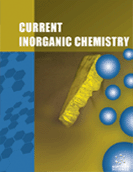Abstract
Background: The chemistry and properties of thiostannates are relatively well explored. Much less is known about oxido-thiostannates or tin-oxo-sulfides which exhibit different structural, chemical and physical properties compared to thiostannates. Moreover, the presence of transition metal complexes in such compound may add additional functionalities.
Objective: The potential of oxido-thiostannates or tin-oxo-sulfides can only be explored if new compounds are synthesized and characterized. Method: The title compound was prepared under solvothermal conditions. The crystal structure was solved and refined from single crystal X-ray data. Further characterization was performed with IR spectroscopy, X-ray powder diffraction and elemental analysis. Results: In the crystal structure of {[Ni(1,2- dach)2(ma)]4[Sn10S20O4]} the anion is covalently expanded by [Ni(1,2-dach)2(ma)]2+ complexes via Ni- S bonds to μ3-acting S atoms of the cluster anion. All O atoms of the cluster anion act μ4-bridging and are in a tetrahedral environment of Sn atoms forming an anti-T2 cluster. Conclusion: The results demonstrate that large anionic units like [Sn10S20O4]8- crystallize at high pH values, while it is assumed that low pH values are necessary for generation of such units.Keywords: Tin-Oxo-Sulfide cluster, [Sn10S20O4]8- anion, solvothermal synthesis, crystal structure.
 19
19


